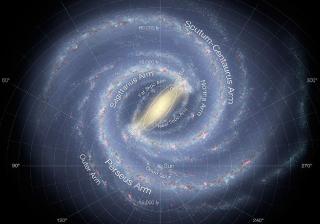Bibcode
Garzón, F.; López-Corredoira, M.
Referencia bibliográfica
Astronomische Nachrichten, Vol.335, Issue 8, p.865
Fecha de publicación:
10
2014
Número de citas
2
Número de citas referidas
2
Descripción
We study the dynamical interactions of mass systems in equilibrium under their own
gravity that mutually exert and experience gravitational forces. The method we
employ is to model the dynamical evolution of two isolated bars, hosted within the
same galactic system, under their mutual gravitational interaction. In this study, we
present an analytical treatment of the secular evolution of two bars that oscillate
with respect to one another. Two cases of interaction, with and without geometrical
deformation, are discussed. In the latter case, the bars are described as modified
Jacobi ellipsoids. These triaxial systems are formed by a rotating fluid mass in
gravitational equilibrium with its own rotational velocity and the gravitational
field of the other bar. The governing equation for the variation of their relative
angular separation is then numerically integrated, which also provides the time
evolution of the geometrical parameters of the bodies. The case of rigid, non-deformable,
bars produces in some cases an oscillatory motion in the bodies similar to that of a
harmonic oscillator. For the other case, a deformable rotating body that can be
represented by a modified Jacobi ellipsoid under the influence of an exterior massive
body will change its rotational velocity to escape from the attracting body, just as
if the gravitational torque exerted by the exterior body were of opposite sign.
Instead, the exchange of angular momentum will cause the Jacobian body to modify
its geometry by enlarging its long axis, located in the plane of rotation, thus
decreasing its axial ratios.
Proyectos relacionados

Morfología y dinámica de la Vía Láctea
El Proyecto se estructura en dos partes, diferenciadas pero complementarias: morfología y dinámica. El estudio detallado de la morfología de la Vía Láctea pretende proveer una base de datos de distribución estelar en las regiones más alejadas y extintas de nuestra Galaxia, mediante el desarrollo de modelos semiempíricos a partir de la información
Martín
López Corredoira